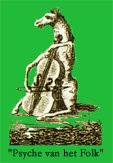 This is a Spanish quartet from Barcelona featuring Manuel Camp (piano and keyboards), Jordi Camp (bass), Santi Arisa (drums) and Marti Brunet (electric guitars and synthesizers). In the first half of the Seventies FUSIOON released three albums entitled "Fusioon I" (1972), "Fusioon II" (1974) and "Minorisa" (1975).The first album FUSIOON contains arrangements from ‘traditionals’. It sounds like a tasteful stew with classical, folk, jazz and symphonic elements. The songs has echoes from KING CRIMSON (Fripperian guitar), FOCUS (flute) and Le ORME/EKSEPTION/ELP (Hammond organ) but the musical ideas are great and the musicians play strong with many surprising breaks and exciting solos and interplay. The highlight is “Danza del molinero” (Manual de Falla) with sparkling piano, a tight rhythm-section, an Andalusian sounding violin, fiery electric guitar and powerful Hammond waves, culminating in a grand finale. The second LP II has a more symphonic sound, especially the Keith EMERSON-like Hammond, Moog - and pianoplay is very prominent but I can also trace GENTLE GIANT (guitar/piano interplay and some vocal harmonies). An alternating and interesting album .Their best effort is the third record entitled “Minorisa”, containing three long tracks. The first two are an amazing blend of KING CRIMSON, GENTLE GIANT, ELP and even TANGERINE DREAM (flute-Mellotron like the “Phaedra”-era) with lots of captivating musical moments, lush keyboards and strong interplay (guitar, keyboards, flute, bass). The third song is a maverick: a kind of sound collage, very electronic like TANGERINE DREAM, SYNERGY and Klaus SCHULZE with flute Mellotron, all kind of synthesizer sounds and fat Moog runs, a bit weird end of this good album. Erik Neutebum
This is a Spanish quartet from Barcelona featuring Manuel Camp (piano and keyboards), Jordi Camp (bass), Santi Arisa (drums) and Marti Brunet (electric guitars and synthesizers). In the first half of the Seventies FUSIOON released three albums entitled "Fusioon I" (1972), "Fusioon II" (1974) and "Minorisa" (1975).The first album FUSIOON contains arrangements from ‘traditionals’. It sounds like a tasteful stew with classical, folk, jazz and symphonic elements. The songs has echoes from KING CRIMSON (Fripperian guitar), FOCUS (flute) and Le ORME/EKSEPTION/ELP (Hammond organ) but the musical ideas are great and the musicians play strong with many surprising breaks and exciting solos and interplay. The highlight is “Danza del molinero” (Manual de Falla) with sparkling piano, a tight rhythm-section, an Andalusian sounding violin, fiery electric guitar and powerful Hammond waves, culminating in a grand finale. The second LP II has a more symphonic sound, especially the Keith EMERSON-like Hammond, Moog - and pianoplay is very prominent but I can also trace GENTLE GIANT (guitar/piano interplay and some vocal harmonies). An alternating and interesting album .Their best effort is the third record entitled “Minorisa”, containing three long tracks. The first two are an amazing blend of KING CRIMSON, GENTLE GIANT, ELP and even TANGERINE DREAM (flute-Mellotron like the “Phaedra”-era) with lots of captivating musical moments, lush keyboards and strong interplay (guitar, keyboards, flute, bass). The third song is a maverick: a kind of sound collage, very electronic like TANGERINE DREAM, SYNERGY and Klaus SCHULZE with flute Mellotron, all kind of synthesizer sounds and fat Moog runs, a bit weird end of this good album. Erik NeutebumThe music featured on "Minorisa" is some of the most original keyboard-based prog that I've heard. FUSIOON's music is somewhat impossible to describe, but I can tell you that the album is made up of 3 long tracks. The first two tracks feature energetic, and playful, interaction between the guitarist and keyboardist. The listener will find a great mixture of symphonic and Spanish influences where the closest comparison that comes to my mind is Le ORME from Italy. My only complaint here is that the last track doesn't fit the atmosphere of the album. This track is basically an 8-minute analog electronic exploration. If the band had written just one more track similar to the first two tracks, this album would have been a masterpiece. Alas, expect 30-minutes of intense prog and 8-minutes of electronic noodling. Steve Hegede ProgArchives
Rate Your Music
Link


















































No comments:
Post a Comment